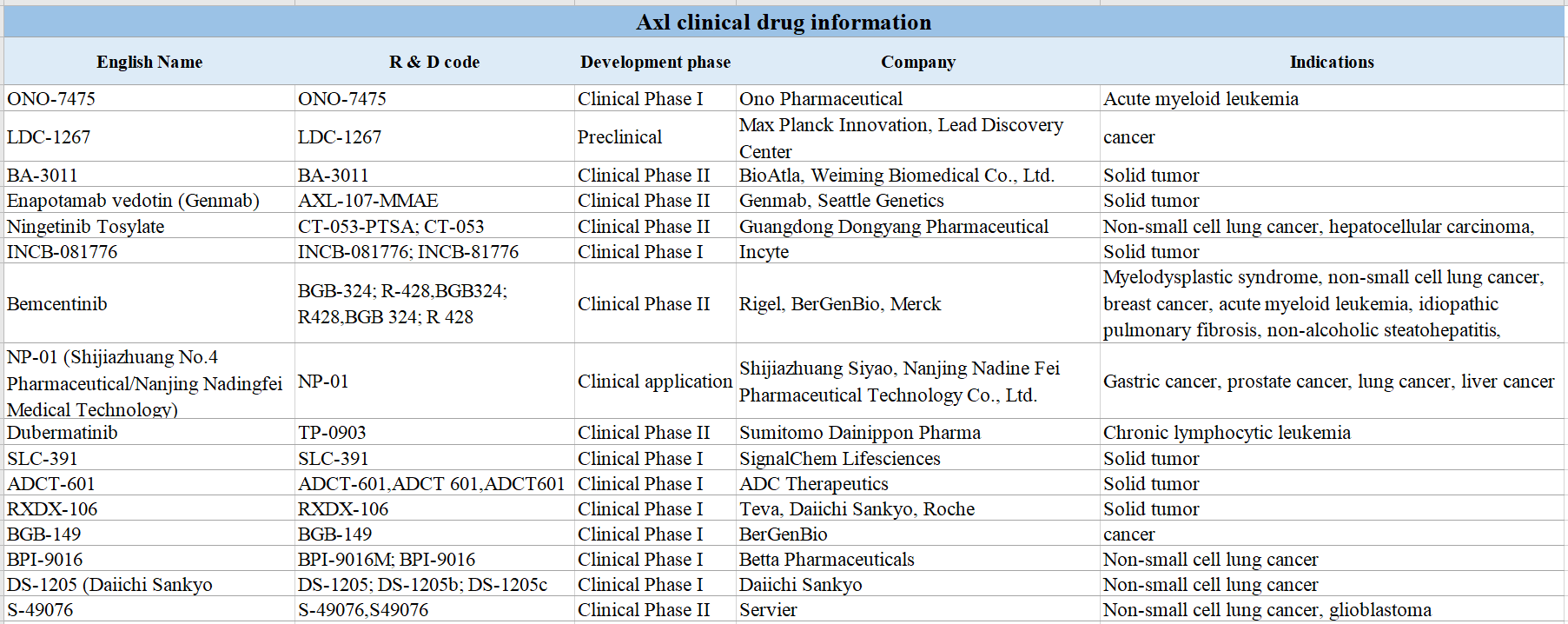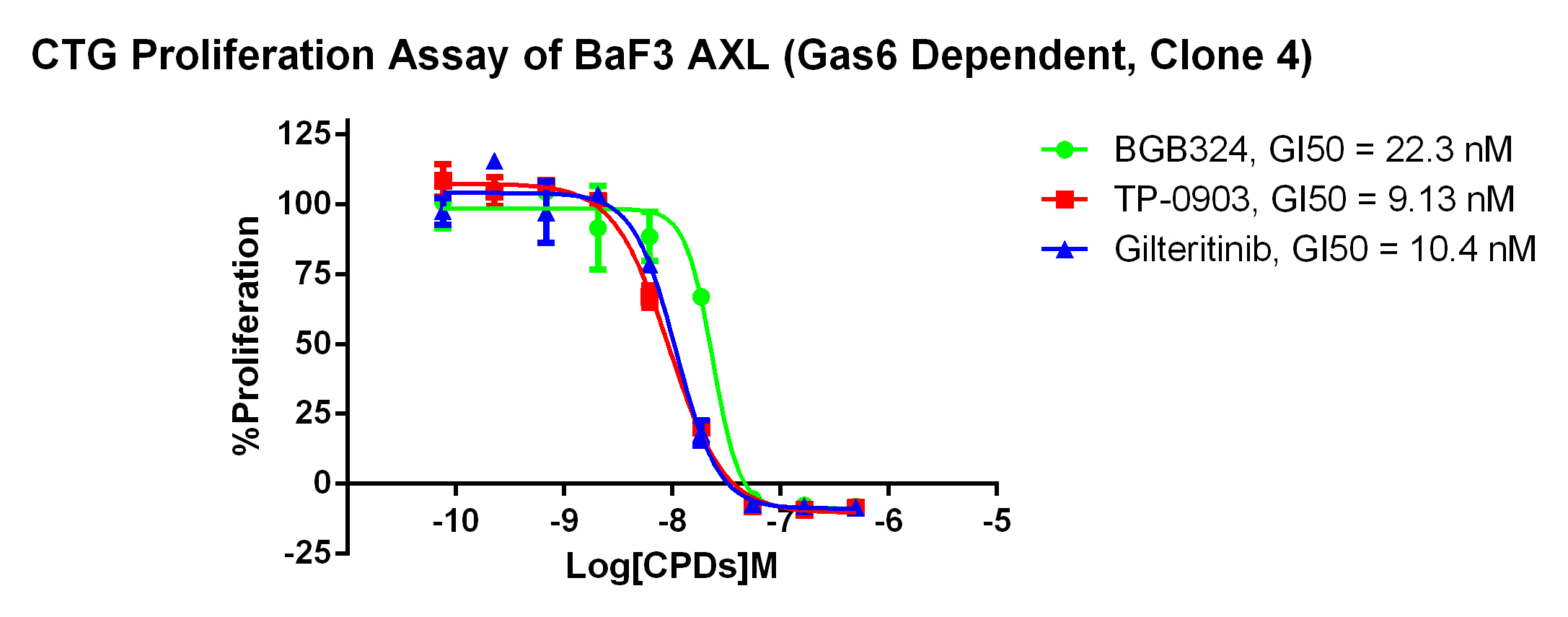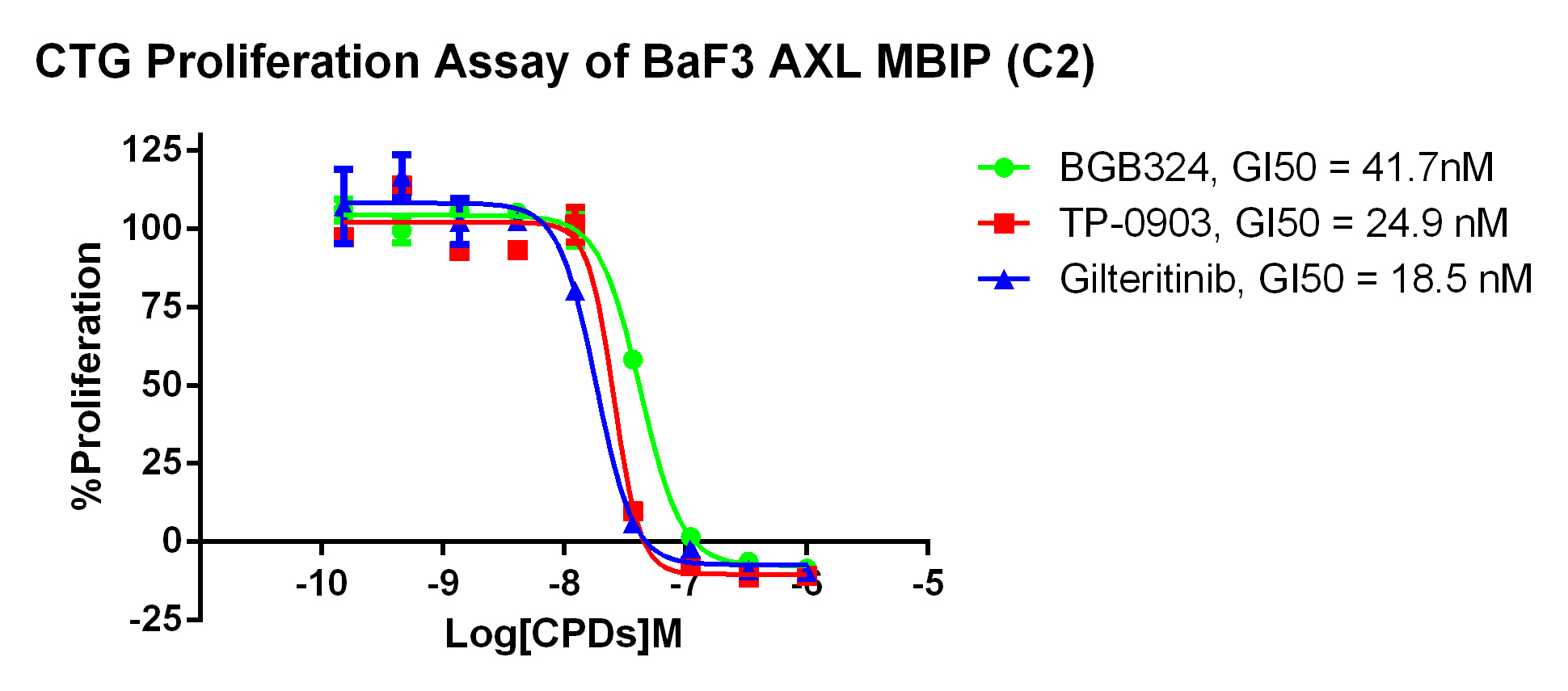[New product online] AXL screening model
Introduction to AXL Receptors
AXL receptor tyrosine kinase, Tyro3 and Mer belong to the TAM family of receptor tyrosine kinases. It contains two fibronectin type III domains, two Ig-like C2 type (immunoglobulin-like) domains and one Protein kinase domain. AXL has many different activation mechanisms under different physiological and pathological conditions, and exerts their respective functions. The most typical way is to produce homodimers by combining with its ligands. In the nervous system, AXL and its ligand growth inhibitory specific protein 6 (Gas6) are co-expressed in a variety of cells and combine with each other to suppress immunity. The function of responding, regulating cytokine secretion, removing apoptotic cells and debris, and maintaining cell survival; in addition, there are several activation methods that do not depend on ligand binding, including homodimerization due to overexpression of AXL itself, or Heterodimerization with non-TAM receptors and binding of the extracellular domain of proteins from two different cells (this binding is thought to be related to the tumor microenvironment). Except for the first activation method, all other methods rely on the overexpression of AXL and other receptors that bind to it.
The role of AXL in tumors
1) AXL promotes tumor growth and migration
Studies have found that AXL is often overexpressed in various types of hematomas and solid tumors, and it is related to the survival and growth of tumor cells and tumor metastasis. A number of cell and animal experiments have shown that reducing the expression of AXL can effectively inhibit the growth of tumor cells, and can also weaken the ability of tumor metastasis and invasion.
2) AXL and tumor resistance
Some recent studies have shown that, in targeted and chemotherapeutic drug treatments, the overexpression of AXL is an important mechanism of action leading to tumor resistance. For example, studies have shown that activated AXL can help cancer cells develop resistance to erlotinib, while inhibiting AXL activity in cells can restore the sensitivity of cells to erlotinib, and AXL overexpression And the dimer produced by binding to EGFR is a major mechanism leading to its drug resistance. In addition, a similar phenomenon was also observed in HER2 positive drug-resistant cell lines induced by the HER2 inhibitor lapatinib.
In addition to participating in the drug resistance mechanism of targeted therapy drugs, AXL has also been found to be involved in the drug resistance mechanism of traditional chemotherapeutics. Its main mechanism is to promote tumor cells to develop drug resistance by promoting epithelial cell mesenchymal transition. Cellular and animal-level experiments It is proved that the selective AXL inhibitor R248 can significantly enhance the anti-tumor effect of docetaxel.
3) AXL and tumor immune regulation
AXL plays a negative regulatory role in tumor immune regulation. It can induce immune escape by promoting EMT of tumor cells and weaken the anti-tumor effect of immune checkpoint drugs. In addition, it can also inhibit innate immune function and cause immune activation. Repressed.
Development status of AXL inhibitor drugs
Because AXL is closely related to tumors in many aspects, the development of drugs targeting this target is very hot at home and abroad. There are dozens of molecules targeted at different cancer types and are in the market or different clinical trials. Tables 1 and 2 below list Some information on the marketed and researched drugs:


AXL screening model
For AXL targets, reqbio has developed a corresponding cell screening model, which can be used to screen small or large molecule inhibitors for AXL. Welcome to inquire.

AXL (Gas6 Dependent)/BaF3 CBP73249

AXL-MBIP/BaF3 CBP73274


